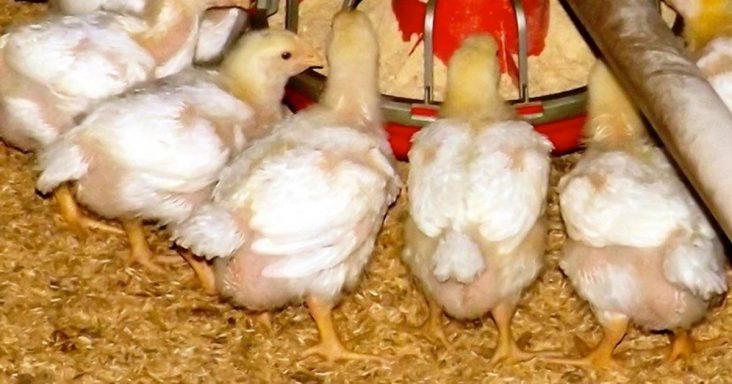Net farm incomes projected to drop in Arkansas by 32% in 2023
by April 11, 2023 2:53 pm 970 views

Net farm incomes in Arkansas set an all-time record in 2022 with $4.2 billion collected. The Rural & Farm Finance Policy Analysis Center, based at the University of Missouri, projects net farm income to drop by 32% to $2.9 billion in the Natural State in 2023, largely fueled by declines in commodity prices.
The Center’s report notes that nationwide there is a projected 19% drop in net farm incomes. Specifically, the report states there will be declines in the poultry and egg sector this year which is the top agriculture sector in Arkansas.
“One contributing factor is the state’s livestock receipts, which decrease more rapidly than national receipts,” the report said. “In Arkansas, poultry and egg receipts make up a larger share of state farm receipts than national receipts; weaker poultry and egg prices in 2023 more than offset any improvements in production.”
James Mitchell, extension economist with the University of Arkansas System Division of Agriculture, said fewer disruptions due to disease are predicted in 2023 and that should lower prices and increase production across the board. Economic pressures will impact demand.
“The result in Arkansas is to mostly follow national trends,” he said. “A lot will depend on consumer demand. This will impact what consumers purchase and where they choose to consume it.”
Another facet of the decline is that federal crop insurance indemnities are expected to decrease by $342 million, while government payments from commodity programs and ad hoc assistance are projected to fall $152 million from the previous year.
Weather and the war in Ukraine had significant impacts on prices in 2022.
“These estimates assume the weather will cooperate more this year than last,” said Hunter Biram, extension economist for the Division of Agriculture. “With kinder weather, Arkansas farmers could be expected to see fewer instances of prevented planting and overall, fewer lost cotton acres. Last year’s growing season saw above-average rainfall at planting driving larger prevented planting claims in corn and rice. The hot and dry summer caused large production losses for cotton, resulting in higher STAX payments.”
STAX is a crop insurance product for upland cotton that provides coverage for a portion of the expected revenue for a grower’s area.
Biram said the drop in commodity program and ad hoc assistance can largely be tied to relatively higher prices and the phasing out of some emergency assistance programs. Price Loss Coverage, known as PLC, and the Agriculture Risk Coverage, or ARC, programs provide financial protections to farmers from substantial drops in crop prices or revenues and are vital economic safety nets for most American farms.
“PLC payments are projected to fall to zero from $29 million while projected ARC payments remain unchanged at zero,” he said.
PLC prices are dropping because record-high commodity prices “will not fall below the Reference Price triggering payments,” Biram said. “The fall in ad hoc program payments, or those programs providing payments in response to a disaster event, is attributed to the end of the Coronavirus Food Assistance Program, or CFAP, and the first phase of the Emergency Relief Program, or ERP. CFAP phase 2 and ERP phase 1 payments in Arkansas totaled $345.9 million and $158.9 million, respectively, in 2022.”
Arkansas farmers will also facE slightly higher production costs than 2021, a year which saw record fertilizer pricing. The report said farmers will be seeing a 0.7% increase in production costs in 2023, despite the easing of fertilizer, feed and fuel costs.
“Despite lower fertilizer prices across all major nutrients, total input costs are projected to be up slightly due to an estimated increase of 17% in interest expense,” Biram said. “This increase in interest expense is driven by the Federal Reserve’s recent increases in the federal funds rate as they attempt to curtail inflation.”
“Additionally, we are projecting a 12.2% decrease in pesticides, fertilizer, and fuel expense, and a 7.2% decrease in feed expense,” he said.
